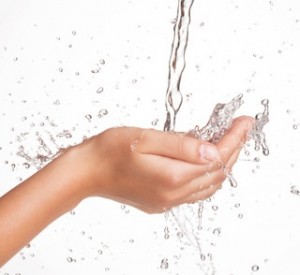 Perhaps it’s a little too easy to overlook the importance of water. It’s simple, after all, to turn the tap and watch it flow. Consider, though, that only 1 percent of the Earth’s water is useable. The rest is either salty or frozen. Not to mention the amount of energy used in acquiring, treating and transporting fresh water to consumers.
Perhaps it’s a little too easy to overlook the importance of water. It’s simple, after all, to turn the tap and watch it flow. Consider, though, that only 1 percent of the Earth’s water is useable. The rest is either salty or frozen. Not to mention the amount of energy used in acquiring, treating and transporting fresh water to consumers.
Saving water in and around your house battles high water bills while helping to save energy and conserve a precious resource.
Saving Water in the Bathroom
- Turn off the water while you brush your teeth, shave and wash your hands. Work up the lather before turning on the water to rinse your hands. Use a glass of water to rinse your mouth. These habits can save gallons of water each day; the more people in your home, the greater the difference.
- Take a shower instead of a bath. Better yet, time your shower to limit the water you use.
- Place a large rock or a 2-liter bottle filled with water in your toilet’s water tank. This displaces some of the water, forcing the toilet to use less water when flushing. Alternatively, replace an old toilet with a low-flush model, which uses about half the water. Feel adventurous? Try a composting toilet, which uses little to no water.
- Switch showerheads. Older homes may have outdated showerheads, which deliver more than 2.5 gallons per minute (the maximum flow rate of modern shower heads). Opt for an even lower flow rate for greater water savings. Also, check if each faucet has a screw-on aerator attached to the spout to reduce water use. Low-flow aerators limit water flow to about 1 gallon per minute.
Using Less Water in the Kitchen and Laundry
Try implementing a few water-saving methods and, when it’s time to replace your washing machine or dishwasher, purchase an Energy Star approved energy and water-saving model.
- Run the dishwasher only when it’s full. Stack the items to ensure the machine operates efficiently.
- Run full loads in the washing machine. Adjust the water level if you must run a smaller load. Also, avoid the permanent press cycle; the extra rinse cycle wastes water.
- Use garbage disposal units sparingly. Try starting a compost pile with your food waste instead.
- Avoid running the water while washing dishes. Fill a double basin with hot, soapy water on one side and clean hot water for rinsing on the other. If you have a single-basin sink, use a large bowl or pan for rinsing most items instead. Alternatively, stack them in a drain rack and spray to rinse all at once.
- When rinsing vegetables, use a large bowl and then use the leftover water on your plants.
- Keep a pitcher of cold drinking water in the refrigerator. This eliminates the need to run water until it’s cold enough.
Conserving Water Outdoors
- Sweep your driveway and sidewalk rather than washing it down with a water hose.
- Instead of washing your car at home, take it to the car wash where the water is likely to be recycled.
- Mow the lawn less often. Longer grass retains water better.
- Water the grass and greenery only when absolutely necessary. Watering early in the morning and late at night, when it isn’t windy or too hot, helps reduce evaporation. Deep soak the lawn rather than lightly watering for best results.
- Mulch around plants, trees and shrubs. A 2- to 4-inch layer of mulch or compost helps repel pests, retains moisture and adds nutrients.
- Cover the swimming pool or hot tub when it’s not in use.
- Install rain barrels. Even just one rain barrel, properly maintained, will collect a tremendous amount of water, which can be used for watering plants or even flushing toilets.
As simple as most of these items seem, implementing even half of them will drastically cut down your water usage.
